23 Advanced eCommerce Personalisation Tactics That Work
Share
eCommerce Personalisation multiplies conversions, increases AOV, and creates relevant customer touch-points.
Despite this reality, many established stores fail at personalisation. This guide is built to help you succeed.
We’ve pulled eCommerce personalisation examples, screenshots, and specific best practices. You’ll see how to
- Maximise Conversions with web personalisation like Thrive Market
- Increase AOV with personalised product recommendations like ThirdLove
- Remove Fear with personalised social notifications like Fit Tribe
Let’s begin.
Note: This post has been updated to reflect the current eCommerce personalisation strategies retailers are using in 2019.
Why You Need to Personalise Experiences
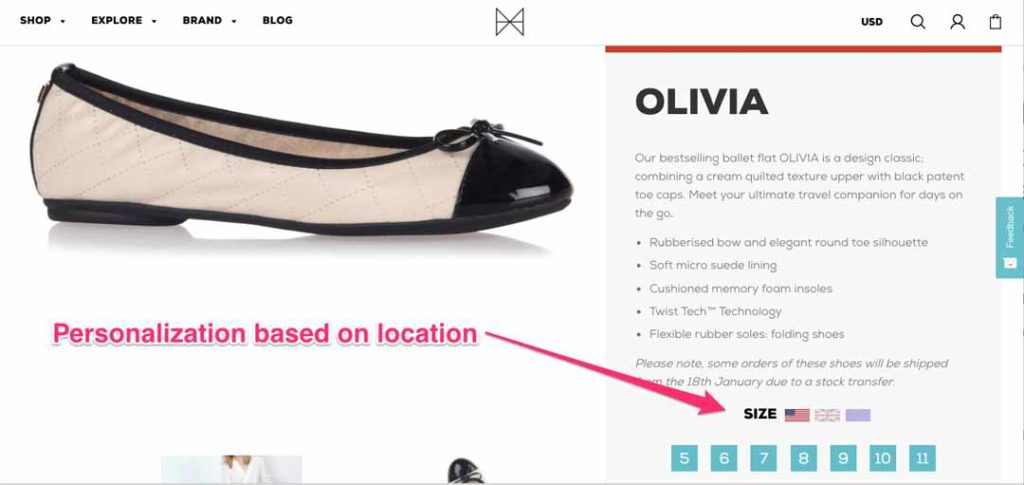

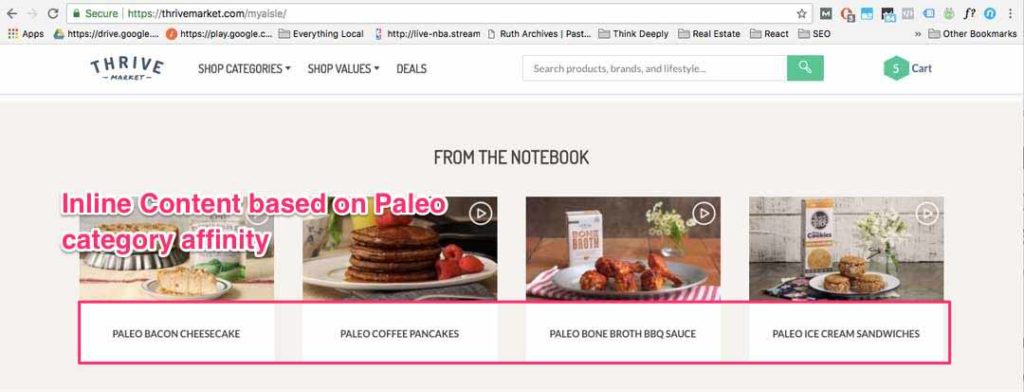
Customers expect relevant offers – products they care about.
The problem is that most stores carry more SKUs than any time before.
Increased competition, endless shelf sp
Presenting prospects with too many options loses sales.
According to Accenture, nearly 40% of shoppers have left a store to buy from another site because they were overwhelmed with too many options.
Even if they don’t leave, almost 75% of your potential customers will be frustrated with irrelevant content or products that are not specific to them.
Your customers expect relevant offers. Flooding them with a multitude of products does not work.
Further, a study by Evergage shows that 96% of digital marketers agree that personalization advances customer relationships.
It is your responsibility to help site visitors find the right products. If you don’t, your customers will move onto the next store.
The solution is eCommerce Personalisation.
Key Takeaways
Without personalization, you are losing 40% of your customers to other stores and wasting valuable opportunities to build deeper relationships with your customer.
What Real eCommerce Personalisation Is:
Personalisation is the real-time customization of a customer’s buying journey. Unfortunately, many marketers execute the low hanging fruit and feel that they’re done. In reality, most are just hitting the tip of the iceberg.
There are unlimited ways you can personalize your store.

Advanced eCommerce Personalization Tactics That Multiply Sales
The following section showcases specific eCommerce personalisation examples to model.
But, before you can understand what is possible, you need to understand how personalisation software works.
How Personalisation Software Works
Data is the lifeblood of personalization.
Depending on your provider, personalization software will use a variety of data points to create the most accurate, highest converting experience for each individual visitor.
- Demographic Data – Gender, geo-location, age, and other demographic data remains a valuable segmentation tool.
- Customer Intent – We track a visitors site behavior and combine it with past session browsing history and actual purchases to understand what types of products and categories they are interested in.
- Wisdom of the Crowd – For first time visitors, we default to aggregated data that makes correlations between previous customers and current site behavior.
- Customized Variables – This allows personalszation to match your merchandising goals. For example, you can set preferred product categories.
Website Personalization Examples
1. What is Website Personalisation
Website personalisation simply alters a site based on who is viewing it. Common tactics include dynamic content, messages, visuals, and offers for each individual shopper.
The three most popular KPI’s for website personalisation are:
- Average Session Duration – Are your prospects spending more time on your site?
- Increased Product Engagement – Are your prospects viewing more product pages and adding more products to their cart?
- Increased Orders – Are you converting more prospects to real customers?
2. Types of Website Personalisation
As personalisation has exploded in popularity, so has the number of tactics that technology enables.
Today, you can personalize virtually any aspect of your website. However, these are the most essential pieces in terms of impact.
Offers
Offers are the single most important aspect of your site to personalize.
You can customize the product itself, the price shown, impose time limits, or change the supporting copy and visuals supporting the offer.
Inline Content
After you’ve personalized your offer, you should focus on how you are educating and motivating your prospects while they are on the site.
Personalise the content that is presented in front of your customers. You can change which featured products are shown, blog posts, downloadable assets, or hero images on any page.
Pop-Ups
Pop-Ups represent a “second net” or opportunity to progress your prospects when they are about to leave.
If your site leverages pop-ups, you should optimise conversions by personalising both the content and offer. All types of pop-ups can be personalised including browse abandonment, on-click, timed, on-scroll, and any other type.
Information Bars
Lastly, Information Bars and other call-out offers continue to be an effective way to maximize value of each site visitor.
Personalizing information bars can be as simple as offering different shipping rates depending on location to offering higher priced items to returning visitors who are in the top 25% of your AOV in past orders.
3. Web Personalization Examples That Work
It’s always best to learn from examples.
Feel free to add these examples to your own swipe files as effective ways to personalize your eCommerce site and optimize your customer’s experience.
Maximize Conversions Like Thrive Market
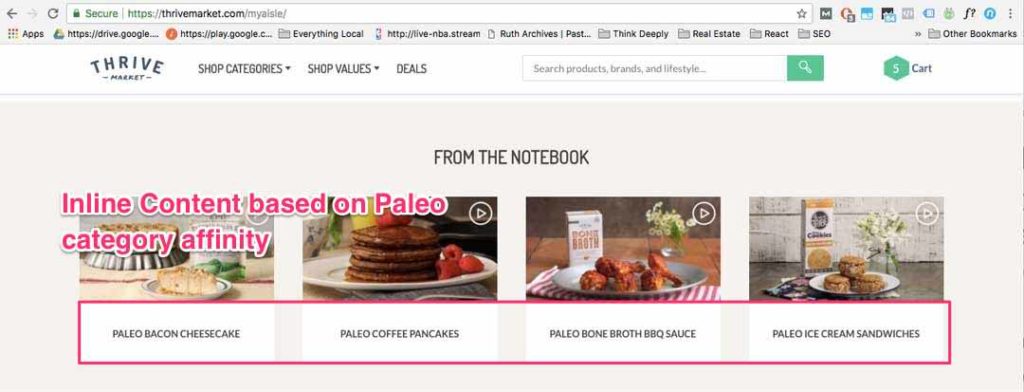
Thrive Market is excellent at personalizing every aspect of the customer journey.
During on-boarding, I defined “Paleo” as one of my interests. When I return to the store’s homepage, I see a series of offered content from their blog.
Each post is tailored to my known interest of “Paleo”. It is a perfect example of how to execute personalized in-line content.
Remove Friction like Butterfly Twists

Saving time and removing friction is one of the best uses of personalization.
This is crucial when your store serves multiple locations.
Here, Butterfly Twist pulls the IP address of my computer and personalizes the product page to default to American sizes.
Personalized Product Recommendations
1. What are Personalized Product Recommendations
Today product recommendations are common.
However, some retailers are leveraging personalized product recommendations much more effectively than others.
When used correctly, product recommendations increase the average number of items in the cart by 68.14% and increase conversion rates by an incredible 320%.
2. Types of Product Recommendations
Like web personalization, product recommendations have completely transformed over the past 10 years.
In 2018, there are literally countless ways you can segment your product catalogue and pipe the perfect products into your recommendations.
Best Sellers
One of the original product recommendation templates remains the most effective. People trust the crowd’s recommendation
Best Seller recommendations are great when you do not know a lot about your prospect. It gives you the best chance of suggesting something that fits their particular needs.
However, it is after you collect more information about your prospect that this type of suggestion becomes powerful.
Personalized “best seller” recommendation widgets perform twice as effective as those that are not personalized.
You Might Also Like
Items are based on currently viewed items.
You should personalize the recommendations based on other website behaviour or past purchases and determine if you should upsell by displaying higher-end alternatives or down sell and display lower priced products.
Cross Selling
This tactic shifts from suggesting similar products to complimentary ones.
By offering complementary products you can increase average order value by educating the customer on how to make their current selection better in some way.
Read 17 Omnichannel Strategies and a Breakdown of Tactics
THE REAL REAL Trigger Email Example
What Customers Ultimately Buy After Viewing This Item
These recommendations help the customer navigate through your catalogue.
You should consider this type of personalization when you product list is large.
3. Examples of Product Recommendations
Increase AOV like ThirdLove
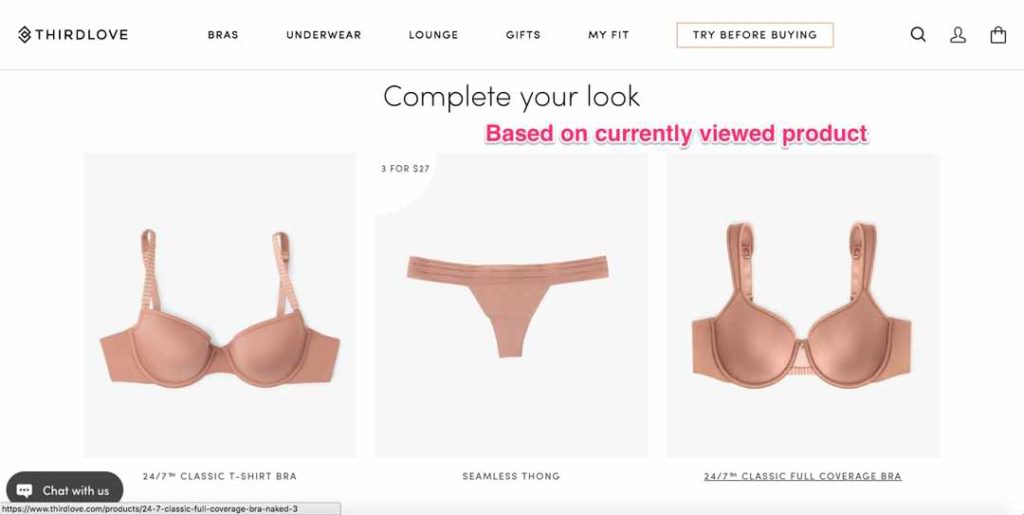
This personalized product recommendation was on their product page.
ThirdLove customises the products they offer based on the currently viewed product, matching the item with complementary products.
The offer is especially effective because of how ThirdLove executes the entire widget.
- Copy – “Complete your look” gives their prospects the idea to shop for a complete pair instead of a single item.
- Matching Colors – The items they suggest are all in the same colour as the currently viewed product.
- Offer – Lastly, they maximize the effectiveness by creating a discount when you purchase three items with their “3 for $27”.
Match Styles & Personalize Upsells Like Adidas
An even more dynamic example comes from Adidas.
Look how they change their recommended products for the same style shoe, depending on the color chosen.
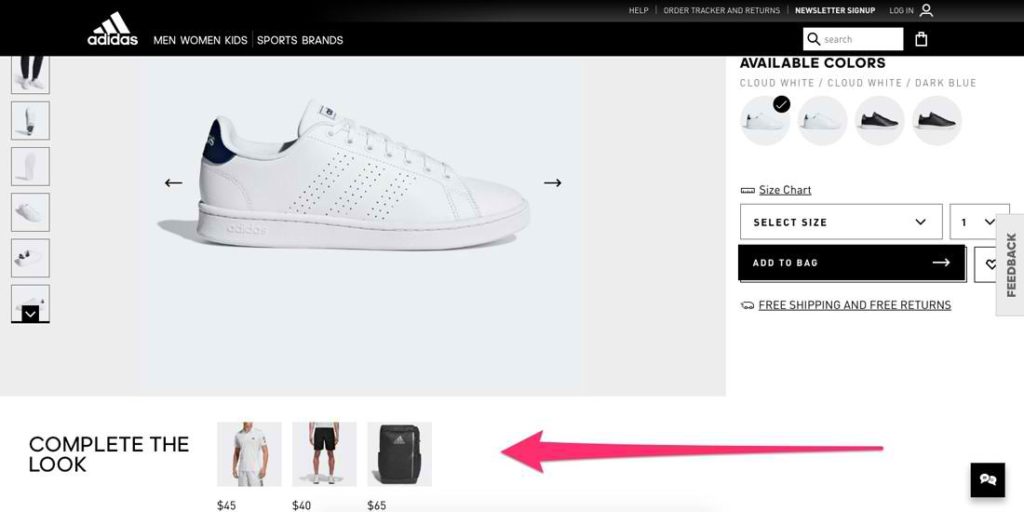
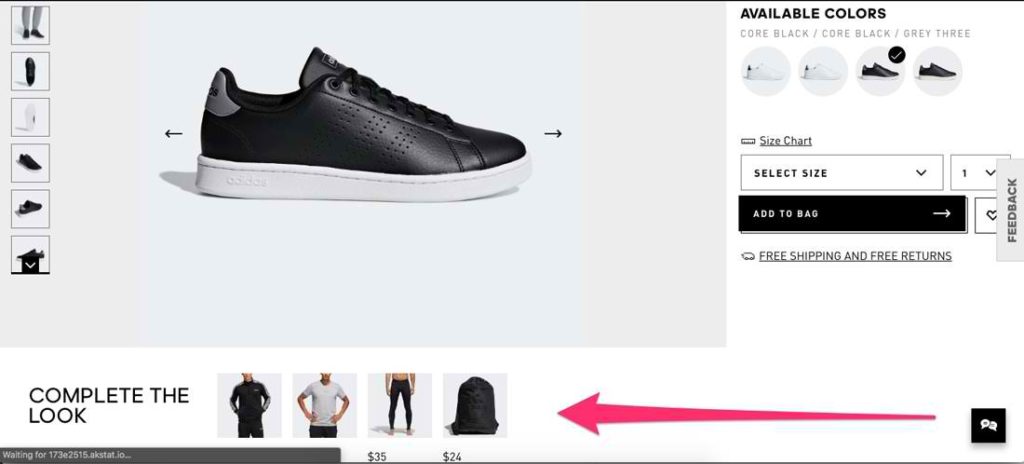
Matching styles, completing outfits, and expanding awareness are all facilitated in this personalization.
Personalise Best Sellers Like Thrive Market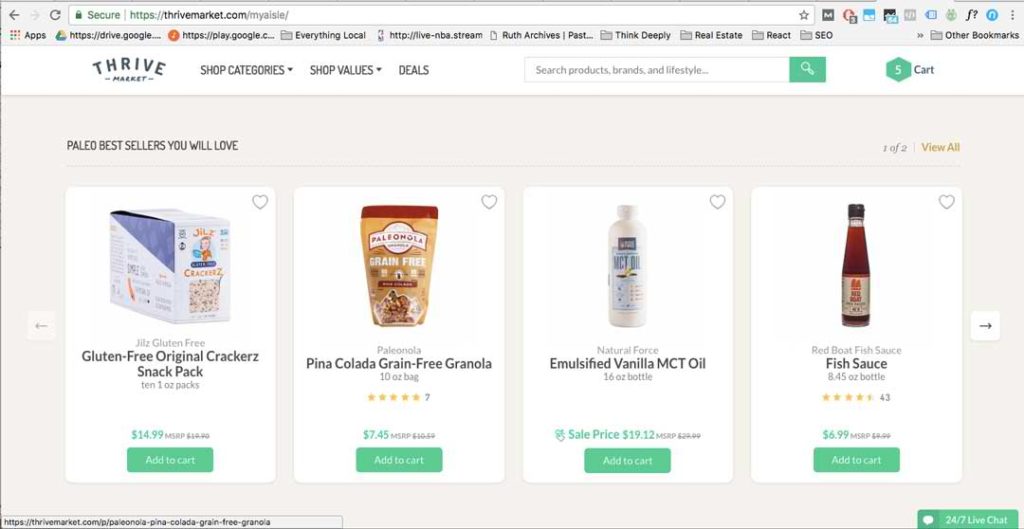
As mentioned, bestselling product recommendations are twice as effective when they are personalized to your prospect’s known affinities.
Thrive knows that I care about Paleo products. Because of this, they don’t just show me the highest selling products of their entire site.
Instead, they restrict the offerings to products that match my affinity.
Personalised Similar Products Like TheRealReal

eCommerce brands can (and should) personalize as many customer touch points as possible – including email.
The RealReal sends a personalized similar product widget along with their cart abandonment email. Notice that the offerings are based on what was originally in my cart.
Personalised Social Proof Notifications
1. What are personalised social proof notifications?
Social proof notifications allow you to give real-time notifications and updates to your customers.
This is one of the newer ways to personalize your eCommerce site. Brands are leveraging this technology to provide relevant, contextual information about themselves, or the products they are viewing.
2. Types of personalised social notifications
Retailers have already pioneered a number of effective ways to use social notifications to increase sales.
- Reviews & Testimonials – Present testimonials in a chat window about the the currently viewed product.
- Follow The Heard– Give customers’ confidence in your store by letting them know how many other are taking a similar action. One common example is how many other people are currently shopping.
- Urgency – Live notifications can be a powerful tool to combat cart abandonment. Let customers know which products are at risk of being sold out or how many customer’s currently have the product in their cart.
3. Examples of personalised social proof notifications
Increase Conversion Rates with Social Messaging like Bookings.com

Bookings.com pioneered live social notifications to increase conversions.
Today, they utilize a number of well tested formats. In the above screenshot, we see distinct fonts, font colour, and call out buttons for
- In high demand – Giving customers a sense of value and security. This call out is heightened by the fact that it was “booked 3 times in the last 24 hours”
- 3 People Looking Now– This additional call out gives further assurance that this is a good choice
- In High Demand – only 5 rooms left- Finally, Bookings.com highlights scarcity and limited supply.
We did a full tear down of Bookings.com, and identified 8 major personalization tactics they use.
Encourage Sales like Fit Tribe
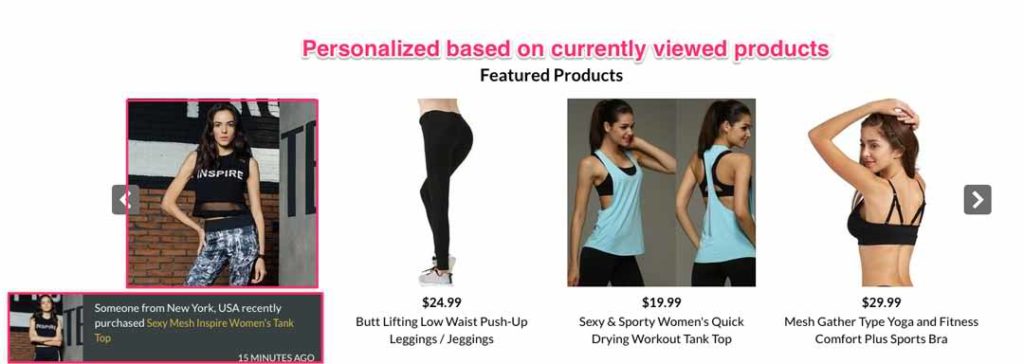
Fit Tribe does a great job of matching which live notifications they send to currently viewed products.
You can see how the live notification is sent, communicating how popular the product is and providing additional social proof with details like time purchased, and where in the world the customer came from.
Communicate Value like Kickers

Here, Kickers underlines one of their key benefits: the durability of their shoes.
What is interesting about this notification is how they customized the image to match the item in my cart. This tactic makes the message much more effective. As a prospect, I completely understand that this statement pertains to the items in my cart.
Personalized Triggered Emails
1. What are personalized triggered emails?
Lastly, eCommerce stores should extend their personalization efforts beyond their site.
Email remains the most essential communication channel, and personalizing your correspondence will multiply your results. You can see all triggered email stats in this study (including cart abandonment, browse abandonment, post-purchase, visit summary, and more).
A “triggered email” is sent based on some sort of user action. The most common type of triggered email is a cart recovery email, which is sent when a customer places an item in their cart but leaves without completing their purchase.
2. Types of personalisations for triggered emails
We’ve written extensively on triggered and cart abandonment emails before.
However, it is worth noting some of the most common ways you can personalize triggered emails.
Demographic personalisations
The most common types of personalisations for triggered emails are demographic.
Dynamically inserting a prospect’s name in the subject line is a common tactic to call out attention in the sea of emails.
Session personalisations
The next most common type of personalisations are session based.
Common tactics include inserting products’ names, images, and dates into the subject line or body of the email.
These personalisation tactics ensure that your email is relevant, following up on known wants of your prospect.
Recommendation personalisations
The next most common type of personalisations are session based.
Common tactics include inserting products’ names, images, and dates into the subject line or body of the email.
These personalization tactics ensure that your email is relevant, following up on known wants of your prospect.
Next Steps
This guide went over the four major ways you can personalize your customer’s experience in an eCommerce environment.
- Define Your Goal – What do you want to accomplish with eCommerce personalisation? How will you know you are successful?
- Determine Capabilities – Your goal will determine which eCommerce personalisation strategy you want to start with.
- Select an eCommerce Personalisation Partner – Finally, you need to select a technology partner that will empower you to accomplish your goals.



















Follow us on social media